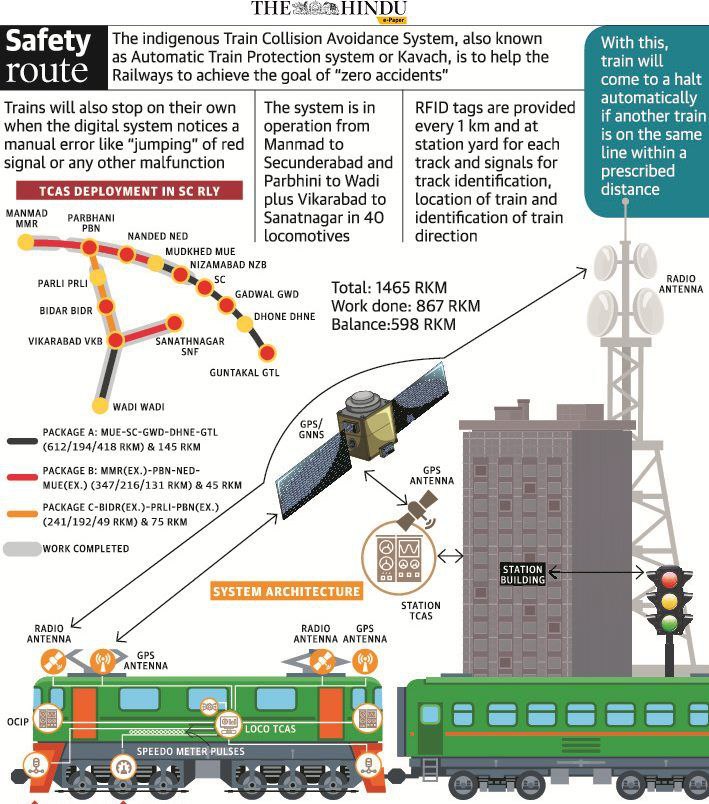From the point of view of UPSC railway safety in Indian Railways has once again become matter of discussion. The Balasore train accident between Coromandel Express, Yeshwantpur-Howrah Express and a goods train caused severe casualties not seen in the last decade. The following important points are to be studied in view of UPSC Civil Services Examination:
Table of Contents
Train Collision Avoidance System (TCAS) or Kavach for Indian Railways
Indian Railways has developed TCAS also called Kavach which is to be installed in all locomotives for automatic avoidance of train collision. The features of Kavach are explained by The Hindu below in graphics.

Difference between LHB and ICF Coaches
| ICF( integral coach factory) coach | LHB ( Linke Hofmann Busche) coach |
| Production started in India in 1952 at Chennai | Production started in Kapurthala in 2000 in the same year as it was launched in Germany |
| Made of steel hence heavy | Made of stainless steel hence 10 percent lighter than ICF coach. |
| Use air brakes hence train drags longer after applying breaks | Use disc brake which stops train in very short distance |
| Maximum service speed of 130 km/hr | Maximum service speed of 160 km/hr |
Additional measures taken for Indian Railway Safety :
- Digital type of machines for Ultrasonic Flaw Detection
- Electronic monitoring of track geometry is carried out with Track Recording Cars (TRC) and Portable Oscillation Monitoring Systems
- Electronic Interlocking System with centralized operation of points and signals are being provided to eliminate human failure
- Complete Track Circuiting of stations to enhance safety for verification of track occupancy by electrical means instead of human element
- Train Protection & Warning System (TPWS) – Train Protection & Warning System (TPWS) mitigates safety risk of accidents/collisions due to loco pilot’s error of Signal Passing at Danger or over speeding. It is a proven European train protection technology and deployed extensively on World Railways
- Elimination of Unmanned railway crossing.
Railway Electrification Status:
- Mission 100% electrification: It has two components, Decision to electrify entire Broad-Gauge network in a Mission mode to provide environment friendly, green & clean mode of transport to its people, unleash potential to use renewable energy especially solar, by making use of huge land parcel available along the railway track
- Current status: 58424 route kilometers has been electrified which is 90% of Indian railway as of May 2023.